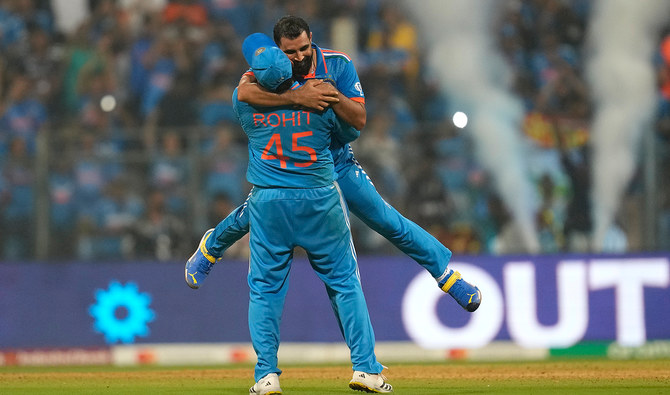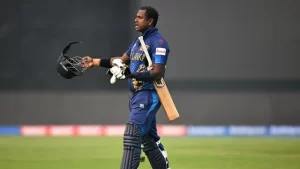World Cup 2023: De Kock Leads South Africa to Another Win

The journey to the Wankhede Stadium reveals clues about its purpose. It is a southward journey, along Marine Drive, just beyond Chowpatty Beach. To the right, the Arabian Sea stretches out, while to the left, the city teems with life, love, and everything else.
Within a kilometer of the stadium, nestled cheek by jowl, are the Catholic Gymkhana, the Police Gymkhana, the Islam Gymkhana, the PJ Hindu Gymkhana, and the Parsi Gymkhana. All offer evidence of what cricket has become: a quintessential Indian sport, though not exclusively so.
At some of these gymkhanas, there are nets; at others, fully-fledged grounds; and at still others, both of the above as well as floodlights. Go past them at any time, and you will likely see pitches being rolled or stumps being pitched in anticipation of a match. More often, a match will already be in progress.
The juxtaposition of these cultural cameos and cricket fields, lined up as if for the edification of passersby, makes a powerful statement: the game’s true home is not Lord’s, Dubai, or anywhere else, but India.
If you doubt this, continue past the Wankhede Stadium for less than a kilometer and you will see the arrestingly gracious Brabourne Stadium, the art deco heritage building that houses the Cricket Club of India. The members of this club are notoriously anti-cricket, complaining about not being permitted to stroll around the ground on an evening during matches. When the fogeys take a dim view, you know something has leaped all boundaries.
It was just as well that Tuesday’s men’s World Cup match between Bangladesh and South Africa was not played at the Brabourne Stadium, lest the venerable members suffer multiple injuries in addition to the perceived insult of being prevented from using their facilities as they wish.
Quinton de Kock shared stands of 131 with Aiden Markram and 142 with Heinrich Klaasen, who helped David Miller add 65 runs off 25 balls. Markram made a measured 60 off 69 balls, but Miller, given the freedom to thrill after coming to the crease in the 46th over, let fly at a strike rate of 226.66 for his unbeaten 34. This helped South Africa amass a total of 382/5, boosted by the at times inept bowling of Bangladesh.
South Africa have scored over 300 in all four matches in this tournament in which they have batted first. Two of those scores were higher than Tuesday’s. In the last 10 overs, the Proteas scored 144 runs, with only two overs in which the bowlers were able to restrict them to single figures.
In the most expensive over of the innings, Shakib Al Hasan was rudely welcomed back after missing the match against India with a quadriceps injury. De Kock hit him for two sixes and two fours, and the over went for 22 runs.
De Kock’s exceptional performance, scoring 174 runs, has catapulted him to the top of the tournament’s leading run-scorers list, amassing a total of 408 runs in just five outings at the crease. His incredible innings on Tuesday marked the highest individual score ever recorded in the 25 ODIs played at the Wankhede Stadium. Furthermore, this remarkable century was his third in the current tournament, a feat that puts him in the elite company of players like Mark Waugh, Sourav Ganguly, Matthew Hayden, and David Warner, who also achieved three centuries in a single edition of the World Cup.
Should De Kock manage to score two more centuries, he will join the likes of Kumar Sangakkara, who accomplished this remarkable feat in the 2015 World Cup. Surpassing that benchmark, with a total of five centuries in the tournament, would place him in the echelons of legendary cricketer Rohit Sharma, who achieved this feat during the 2019 World Cup.
When more than three-quarters of an innings unfolds with a barrage of boundaries, as was the case with De Kock’s remarkable performance, it becomes a challenge to distinguish individual shots from the dazzling array. However, there was one unforgettable moment in the 44th over when De Kock unleashed a vicious straight drive for four, leaving the bowler, Shoriful Islam, scrambling for cover. This shot etched itself not only in the spectators’ memory but also in Shoriful’s.
“You never want to limit his brilliance; you simply want to let him soar,” remarked Markram, who assumed the captaincy role in the absence of Temba Bavuma, who also missed the game against England at the same venue on Saturday. Among the 14,068 spectators in the crowd, a couple held up a hand-written sign that read: “De Kock, please don’t retire after this World Cup!!!” South Africa’s Minister of Sport, Zizi Kodwa, shared a photo of this scene on social media, adding the caption: “I support this plea! Please consider it, Quinny.”
When De Kock achieved his maiden century at a World Cup, facing Sri Lanka in Delhi on October 7, he erupted into a spirited celebration. However, on Tuesday, he displayed a more subdued demeanor, removing his helmet and raising his bat with a touch of humility. The challenging weather in Mumbai, characterized by a scorching 35-degree temperature and 60% humidity on that Tuesday, likely contributed to this change in demeanor.
How significant were the environmental conditions in South Africa’s decision to bat first, thus avoiding prolonged exposure to the intense heat until after sunset? Markram explained, “Today, the conditions weren’t as sweltering as during the England game, but it was still quite hot. Spending 50 overs in the field, regardless of the heat, can be quite draining. While it’s not the sole reason for our decision to bat first, it does offer a slight advantage, especially when conditions are on the warmer side.”
Heinrich Klaasen experienced the intensity of the game firsthand on Saturday, when his impressive knock of 109 played a pivotal role in South Africa’s record-breaking victory over England, securing a margin of 229 runs. Amidst his ferocious batting, Klaasen often found himself crouching, conserving every ounce of energy. The question loomed – how would he fare just three days later? Remarkably, Klaasen managed to muster the stamina to score 34 runs from his 49 deliveries through swift ones and twos. The remaining runs came from two boundaries and eight powerful sixes, accounting for nearly two-thirds of his total score.
Klaasen appeared destined for a second century until, with just five deliveries remaining in the innings, he lifted a catch to the boundary cover off Hasan Mahmud. Nevertheless, South Africa’s contribution to the tournament’s century tally now stands at six out of the 19 centuries scored, representing a remarkable 10% of the centuries achieved by players, while accounting for just under one-third of the significant runs amassed.
Following his exerting innings on Saturday, Klaasen was so fatigued that he opted not to take the field during England’s response. While Klaasen batted for 99 minutes on Tuesday, De Kock displayed remarkable endurance, staying at the crease for 199 minutes. This 100-minute gap raised the question of which of the two specialist wicket keepers would assume the role behind the stumps when the game resumed. This time, De Kock was granted a night off, and Klaasen, with enthusiasm and energy, took up the wicket keeping duties.
Bangladesh, undoubtedly drained in terms of both concentration and physical fitness due to their relentless ordeal in the scorching conditions, stumbled to 81/6 in 22 overs. Shakib’s disappointing return to form was sealed when he edged a drive to the fourth ball he faced, bowled by Lizaad Williams, who made his World Cup debut in place of Lungi Ngidi, nursing a knee injury, and was subsequently caught behind for just one run.
While it was evident that Bangladesh had little chance of winning, there remained the question of whether they could avoid claiming or sharing the record for the most lopsided defeat in a World Cup match, a dubious distinction held by Afghanistan following their 275-run thrashing by Australia in Perth in 2015. Bangladesh narrowly escaped that fate on the 28th over, and the rest of their innings faded into obscurity on another humid and hazy Mumbai night.
Their ordeal concluded at 233 runs in 46.4 overs, marking their fourth loss in five matches. A somewhat bittersweet cheer emanated from the crowd when Mahmudullah reached his fifth ODI century in the 45th over. His composed and powerful 111 runs, accumulated at a run-a-ball rate, endured through five partnerships and showcased impressive footwork. However, it is doubtful that this performance will be remembered beyond the borders of Bangladesh.





